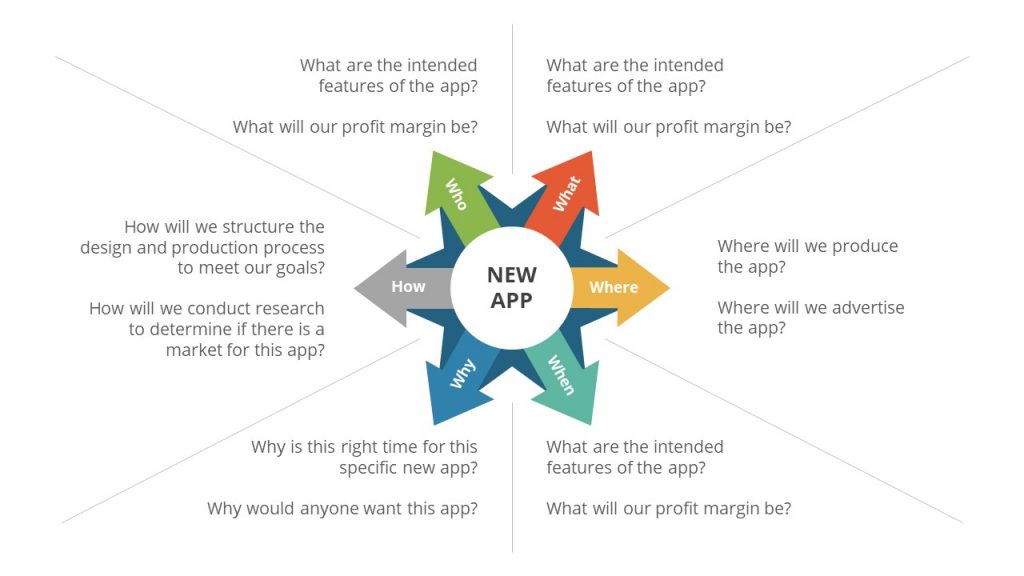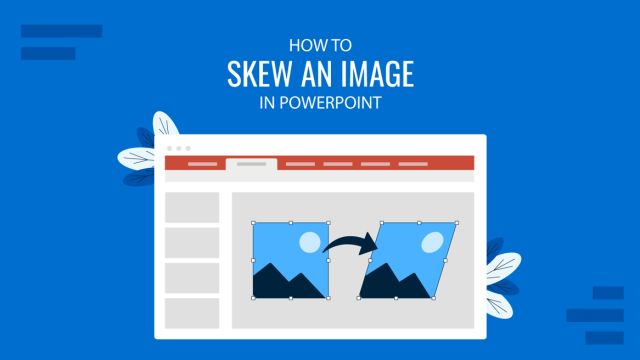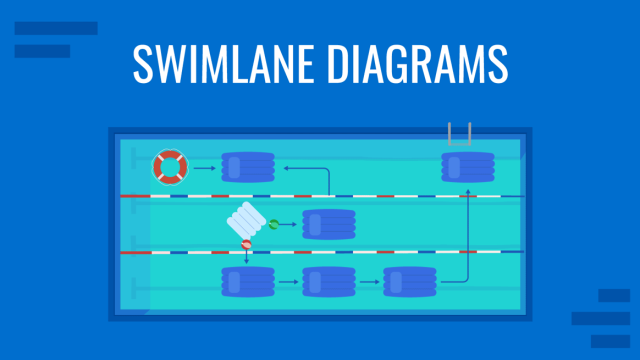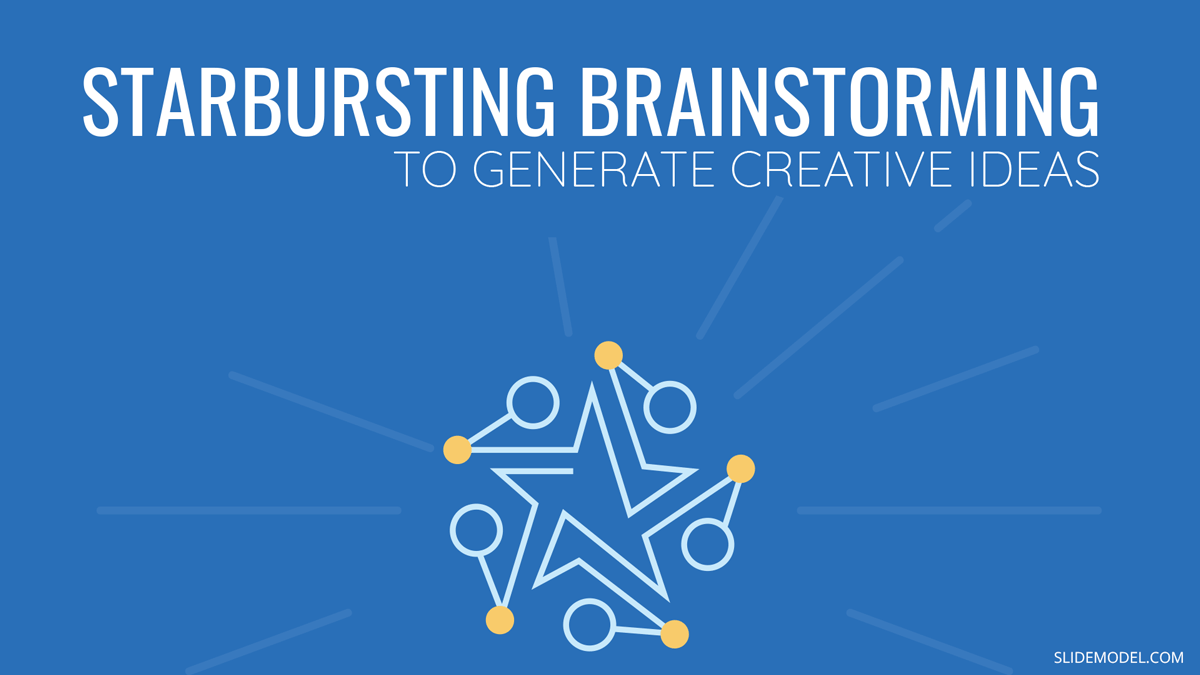
Many brainstorming sessions can get lost in translation due to the conflicting ideas and opinions of participants. You might want to create a better product than the competition, only to come up with a difference of opinion which seems irreconcilable. Moreover, brainstorming sessions can often lack cohesion, leading to short-sighted decision making. You can structure better your brainstorming sessions with the use of Starbursting Brainstorming. You can also document your brainstorming sessions with flowchart creator tools.
What is Starbursting Brainstorming?
Starburst Brainstorming is a structured way of generating questions during a brainstorming session. This brainstorming method helps ensure that all the basic questions related to the product, process, problem, or idea are answered to provide a clear path forward. The session can be iteratively followed to expand upon the initial set of questions that can even happen during a presentation. Starbursting Brainstorming is a decision making or problem-solving mechanism that can help focus on the central concept under discussion.
The session is conducted using a six-point starburst diagram, each end of the diagram marked with a question, with the problem mentioned in the center of the star. The six questions of a Starbursting Brainstorming session include who, what, why, where, when, and how. Each of these is marked at one of the six points of the star. The central brainstorming idea starts with these six questions, as participants focus on generating relevant questions around them. The session might be followed up to ask further questions or to seek answers to the questions generated in the initial session.
Regardless if you are doing a workshop or a team brainstorming, it´s a great idea to use a PowerPoint template to lead the activity.
How to Use Starbursting Brainstorming
Starburst Brainstorming can be performed by following a few simple steps. The primary objective is to ensure that participants can brainstorm in a structured manner to achieve meaningful results.
Step 1: Construct a six-point star
You can get started with Starburst Brainstorming by constructing a six-point star.
Step 2: Mention the product or idea
You should mention the primary goal or problem in the middle of the star. This will be the central idea, concept, process, problem, product or service which will be the focus of the session.
Step 3: Add the six ‘Ws’
Add the six ‘Ws’ for each point of the star. The who, what, how, where, when, and why needs to be questioned during the session. For each of the six aspects, add the question at the tip of the star in the relevant space. For example, when answering ‘what’ you should mention the question related to what on top of it. Similarly, you can answer ‘who’ would be responsible for getting the task done, ‘where’ would it be executed, and so on. Do not attempt to answer questions immediately. You should continue brainstorming until you have at least 3 questions for each of the six ‘Ws’. You might need to follow up on your session to expand your questions further.
Step 4: Systematically Answer Questions:
Once you have enough questions, you can systematically analyze and answer them. You can find examples of Starbursting questions from the section below.
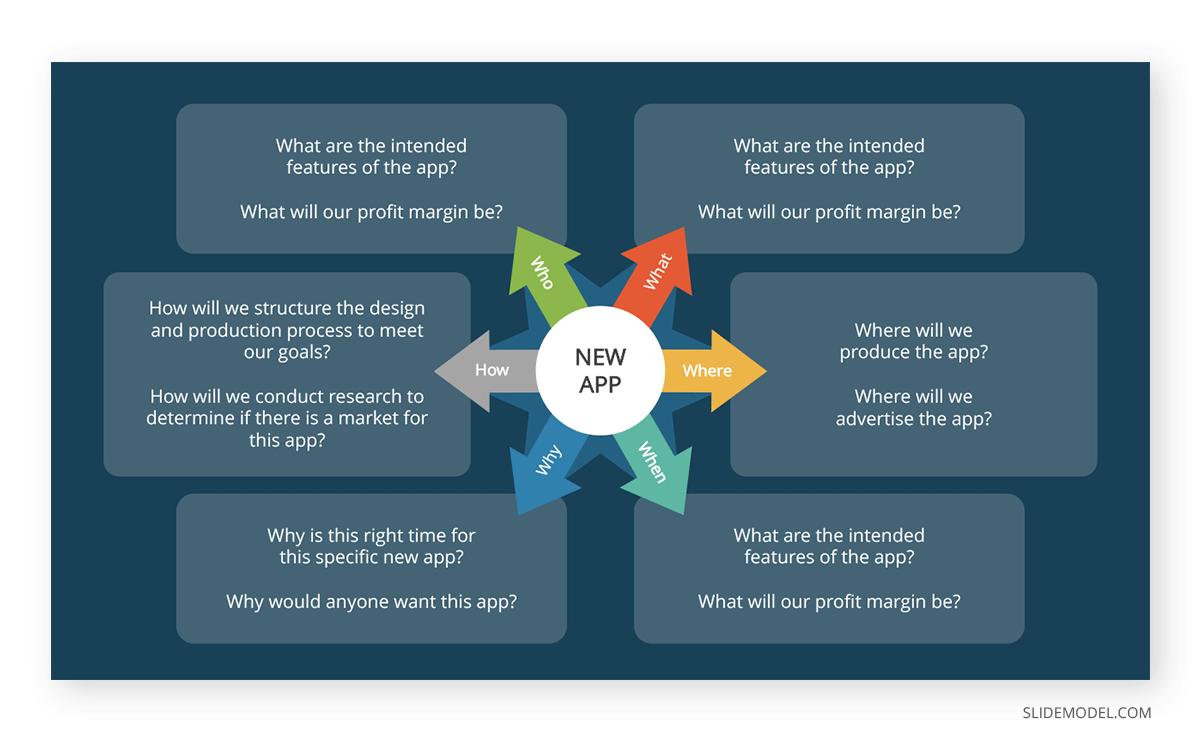
As you can see in the example image, you can use our PowerPoint Templates to collaborate during the Starbursting session and record all the questions and answers.
Example of Starbursting Brainstorming for Development of Mobile Weather App
In this example, we will ask questions associated with a Starbursting Brainstorming session to develop a mobile weather app. The example below is a reference of how you can use the six ‘Ws’.
Who
This is the part where you need to ask questions such as ‘who’ might perform the necessary tasks, who might be your customers, who might be your competitor, who might market the product, etc. The idea is to identify who will get things done, who might buy a product, who might be your competitor, regulator, or roadblock in the process, and so on.
Relevant questions about the people involved can be: Who will develop the app? Who will buy the app? Who will be the toughest competitor?
What
This is meant to answer basic questions related to what the idea or product might be about, associated costs, the best way forward or what might prevent the process from moving forward. The ‘what’ can be used to find relevant questions related to what the central idea or problem is.
To understand better you can ask: What will be the name of the weather app? What will be the cost of developing the app? What will be the best way to market it?
How
Discussing ideas can be easy, but how are they to be executed? The ‘how’ is all about asking how to get things done.
To understand what will be the roadmap ask: How will the app generate a profit? How much will be spent on marketing the app? How do we provide cross-device compatibility for the app?
Where
The ‘where’ implies looking at aspects such as where would the plans be executed, where would be the customer base or perhaps where you need to secure the financing for your product.
Define where your solutions will come from: Where will the financing of the app come from? Where will the mobile app be sold? Where will we advertise the app?
When
The ‘when’ is all about timelines and understanding how to manage the execution of the product launch, process, idea, or resolution of the problem. You can specify the basic milestones during this process to outline how long it might take for the execution process to determine if what is being planned is even feasible within a proper time frame or are there needs for scaling back ideas.
Start defining the timelines with: When do we begin development for the mobile app? When will the weather app be launched? When do we begin advertising the app?
Why
It’s always a good idea to ask tough questions such as why a product would be successful or why would people flock to your product when there are other alternatives?
Deepen your vision and define your actions by asking: Why do we think this app can be a success? Why would people pay for our app instead of competitor apps? Why would we succeed when three other weather apps have failed recently?
Answering Questions Generated During a Starbursting Session
Answering the questions generated during a Starburst session can help identify important questions and to seek answers. In the example of the weather app given above, answering the six questions can help answer everything; from the name and specifics of the weather app, as well as details about its financing, development, testing, launch, customer base, marketing strategy, and potential success. Answering the questions raised above can also identify if the venture is worth undertaking in the first place. There can also be additional analysis performed related to the experience, such as by performing a SWOT or customer need analysis.
Regardless of how you conduct a brainstorming session, there are a few basic steps that can help make brainstorming sessions more effective. You can get a few ideas regarding this from our post about how to create an effective brainstorming process.
Pros and Cons of Starbursting Brainstorming
There can be both benefits and issues associated with using Starbursting to structure your brainstorming session. Let’s explore the pros and cons of using the method.
Pros
- Starbursting Brainstorming helps ask focused questions to structure the brainstorming session.
- It might lead to questions that otherwise might not be asked, and can shed light on tough questions that need to be asked regarding the viability of the product or idea being discussed.
- Starbursting might help identify products or ideas which might not be financially viable by identifying key issues which might lead to the failure of a product or venture.
- The process can allow a team to plan ahead of time and generate new ideas which might lead to a profitable venture for an organization in the near future.
Cons
- In order to make a Starbursting session successful, there is a need to have a competent team asking the questions. The session’s meaningful outcome is limited to the type of people engaged in brainstorming.
- If the organization is not well represented in a capability diversity, the session might be limited to an exercise in futility.
- Since a Starbursting Brainstorming session is focused on basic questions, a team will not be leaving the session with a specific timeline or a detailed plan. It is merely the beginning of asking relevant questions, which will require additional analysis.
- The process can be time-consuming and might not be suitable for time-critical issues and tasks.
Final Words
Starbursting Brainstorming can be a useful method for organizing your brainstorming session. The questions asked during such a session are open ended and cannot be set in stone. The participants need to have the liberty to ask relevant questions that might be essential for identifying and understanding if a product or idea is viable, needs adjustment, or generates new ideas. To make the session meaningful one must ensure that relevant and competent individuals are invited to participate in such a session. Furthermore, it is best to keep the session limited to a handful of people. Sessions with more than six individuals might be harder to control and may become too lengthy.
Starbursting might not be feasible when there is a time-based limitation associated with the task, product or problem under discussion. There is no harm in asking new questions as you move along with the session, as well as to remove questions that might be redundant. This might help refine the process. It can be beneficial to use this type of brainstorming ahead of time to ensure further analysis can be performed based on the questions generated during a session.
